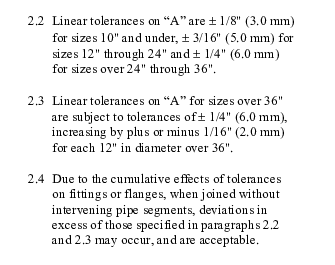On a real-world basis, you should NEVER "design" pipe fittings so closely that the manufacturing "tolerance" of assembly of successive "parts" causes a gap or an interference or a access problem (a valve too close to a piece of steel to operate or to remove the actuator.
"Pipe" welding requires a butt weld gap at each weld, threaded and socket weld piping requires gaps for assembly tightening and for the SW fitup/expansion. Threaded pipes usually have connectors between threaded joints so the pipes rotate and close.
Clearly, after assembly of every spoolpiece, there can be neither gaps nor overlaps: the whole pipe must fit near-perfect from start to finish without jamming nor . The pipe must be able to move (expand) with heat, load, weight and live loads, and with the occaisional water hammer. Supports attach at the middle of pipes but have to be designed (specified) to fit the function and the support steel they attach to. Support locations do need to be worked out so differences in the as-built conditions can be accommodated.
So, to the specific question: Don't design the pipe components so end-to-end "tolerances" matter, your pipe fitters and pipe welders HAVE TO BE ABLE to cut the pipe stubs for weld gaps and assembly.

